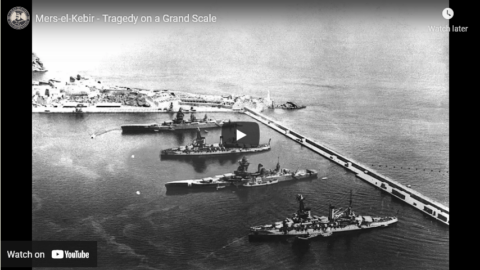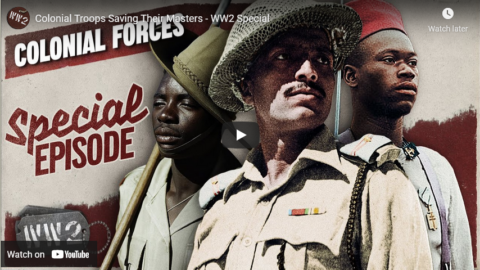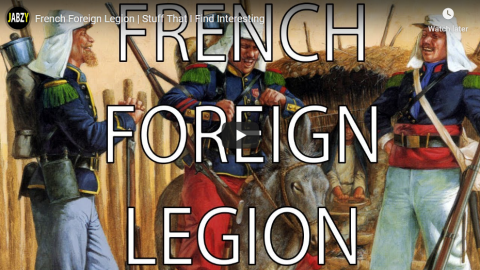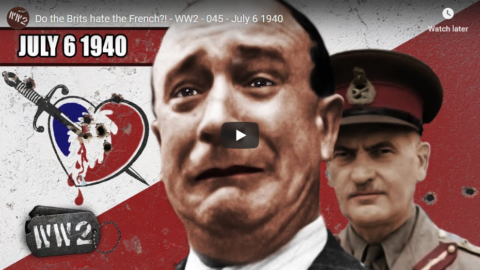Forgotten Weapons
Published 25 Oct 2017After World War Two, both the Beretta and Breda companies in Italy began manufacturing M1 Garand rifles. When Italy decided that they wanted a more modern selective-fire, magazine-fed rifle, they chose to adapt the M1 Garand to that end rather than develop a brand new rifle. Two Beretta engineers, Vittorio Valle and Domenico Salza, began work in 1957 on what would become the BM-59. Prototypes were ready in 1959, trials were run in 1960, and by 1962 the new weapon was in Italian military hands.
The BM59 is basically an M1 Garand action and fire control system, but modernized. The caliber was changed to 7.62mm NATO, and the barrel shortened to 19.3 inches. A simple but effective selective fire system was added to the fire control mechanism, and the en bloc clips replaced with a 20-round box magazine (and stripper clip loading guide to match). A folding integral bipod was added to allow the rifle to be used for supporting fire on full auto, and a long muzzle device was added along with a gas cutoff and grenade launching sight to allow the use of NATO standard 22mm rifle grenades.
In this form, the BM59 was a relative quickly developed and quite successful and well-liked rifle. In addition to the Italian military, it was purchased by Argentina, Algeria, Nigeria, and Indonesia. A semiautomatic version was made for the US commercial market and designated the BM62, and a small number of fully automatic BM-59 rifles — like the one in this video — were imported into the US before the 1968 Gun Control Act cut off importation of foreign machine guns.
(more…)
September 18, 2023
BM59: The Italian M14
July 15, 2023
The French Intifada
Ed West on the origins of the rising violence in French towns and cities:
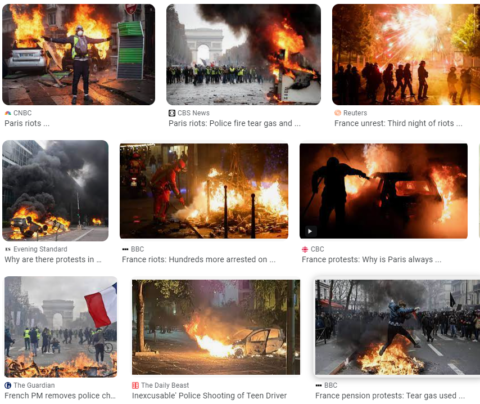
I ran an image search for “Paris rioting” and there was a plentiful supply of fiery, eye-catching photos. Not all of these are from the most recent outbreak of violence, but they are certainly representative of how the legacy media is covering the situation.
The recent violence in Paris and elsewhere, which saw attempts to ram the home of a mayor, once again highlighted the trouble the country has with integration. But the French police union describing themselves as being “at war with vermin” illustrated the different mindset to the English-speaking world, and the far more belligerent approach to the problems of diversity.
Like Britain, the Netherlands, Germany and Sweden, France has had difficulties assimilating the children of immigrants from beyond Europe, yet its recent history has proved especially violent and troubled. Britain has jihadi terrorism – 2017 was especially grim – but it has never reached such intensity. Today, as over 130,000 police officers stand guard to protect the Republic on the day of its celebration, it is worth considering the journey that brought it to such a state.
Analysts have often compared Britain’s state multiculturalism with France’s system of laïcité, which tends to downplay the existence of “communities” even to the point of not taking demographic statistics. Although neither country’s approach has entirely been a success, France’s refusal to recognise immigrants as anything but French has often been blamed for the widespread sense of alienation.
Others point to the housing system, which tends towards concentrations of North and West Africans in suburban banlieues, or the less laissez-faire economic policy which results in higher unemployment (in exchange for better social security).
While they no doubt play a part, the biggest single difference is history, as Andrew Hussey recounted back in 2014 in The French Intifada, in particular France’s history with North Africa. To put it in British terms, imagine that Britain’s rule in Pakistan had involved not a small number of administrators and soldiers but instead hundreds of thousands of British settlers arriving in the country, many with the intention of making it a “new America” (i.e. driving the natives out).
That Britain had declared Pakistan an integral part of the country, and that, rather than scarpering in indecent haste when the empire began to disintegrate, Britain had dug in to preserve its rule in a sadistic war of independence, one in which natives and white settlers committed countless atrocities against each other.
And that this violence had spilled into Britain with assassination attempts and terrorism, by both sides, destabilising the country to the point where there was talk of a coup. And that this was happening just as large-scale immigration to the colonial power was taking place.
Britain experienced nothing like as much violence in the dying days of empire, and indeed the only real comparison with our history was the moment when there was almost all-out conflict between Britain’s Protestant and Irish Catholic populations before the First World War.
If French politicians so casually talk of “civil war” between its right wing and the Algerian-descended population, it is because it has already played out this conflict before – one that was never healed, and so invites a sequel.
February 11, 2023
Tank Chats #167 | French Panhard EBR | The Tank Museum
The Tank Museum
Published 28 Oct 2022How much do you know about the Panhard EBR? Join David Willey for this week’s Tank Chat as he covers the development, design and use of this French armoured car.
(more…)
July 29, 2021
MAT 49: Iconic SMG of Algeria and Indochina
Forgotten Weapons
Published 16 Jan 2018http://www.patreon.com/ForgottenWeapons
Cool Forgotten Weapons merchandise! http://shop.bbtv.com/collections/forg…
The MAT-49 was developed by France after World War Two to satisfy the need for a more modern submachine gun to replace the MAS-38. The military had come around to standardizing on the 9x19mm cartridge for its pistols and subguns, and the 7.65mm MAS-38 was not feasible to convert. All three state arsenals and the Hotchkiss company submitted designs, and the Tulle arsenal won out with a gun that borrows substantially from the American M3 “Grease Gun”.
About 700,000 MAT-49s were produced between 1949 and 1979, when it (along with the MAS 49/56 rifle) was replaced by the FAMAS bullpup rifle. During that time it saw substantial combat in France’s colonial wars, notable Algeria and Indochina. Despite being a relatively heavy weapon, it came to be well liked by all who used it for its durability and reliability.
Many thanks to the anonymous collector who let me take a look at this piece and bring you a video on it!
If you enjoy Forgotten Weapons, check out its sister channel, InRangeTV! http://www.youtube.com/InRangeTVShow
July 17, 2021
Mers-el-Kebir – Tragedy on a Grand Scale
Drachinifel
Published 30 Oct 2019Today we look at the facts and thinking behind the attack on Mers-el-Kebir, with my own take on roles and responsibilities.
Comments and Discussion welcome.
Want to support the channel? – https://www.patreon.com/Drachinifel
Want a shirt/mug/hoodie – https://shop.spreadshirt.com/drachini…
Want a medal? – https://www.etsy.com/uk/shop/Drachinifel
Want to talk about ships? https://discord.gg/TYu88mt
Want to get some books? www.amazon.co.uk/shop/drachinifel
Drydock Episodes in podcast format – https://soundcloud.com/user-21912004
March 5, 2021
Colonial Troops Saving Their Masters – WW2 Special
World War Two
Published 4 Mar 2021Without the incredible support and sacrifice of troops from British and French colonies, the Allies would be having an even harder time withstanding the Axis onslaught. This episode looks at their formation and their fighting style.
Join us on Patreon: https://www.patreon.com/TimeGhostHistory
Or join The TimeGhost Army directly at: https://timeghost.tvFollow WW2 day by day on Instagram @ww2_day_by_day – https://www.instagram.com/ww2_day_by_day
Between 2 Wars: https://www.youtube.com/playlist?list…
Source list: http://bit.ly/WW2sourcesHosted by: Indy Neidell
Written by: Markus Linke and Indy Neidell
Director: Astrid Deinhard
Producers: Astrid Deinhard and Spartacus Olsson
Executive Producers: Astrid Deinhard, Indy Neidell, Spartacus Olsson, Bodo Rittenauer
Creative Producer: Maria Kyhle
Post-Production Director: Wieke Kapteijns
Research by: Markus Linke
Edited by: Miki Cackowski
Sound design: Marek Kamiński
Map animations: Miki Cackowski, Eastory (https://www.youtube.com/c/eastory)Colorizations by:
Daniel Weiss
Mikołaj UchmanSources:
Photo of French Saharan troops (1932), courtesy of Acln https://commons.wikimedia.org/wiki/Fi…
Archives du département du Rhône et de la métropole de Lyon
The New York Public Library – Digital Collections
USMC Archives
IWM E 11584, CBM 2264, E 6605, IND 2864, IND 2290, K 1385
Picture of Sudanese Defense Force near Kufra Oasis, courtesy of Major PJ HurmanSoundtracks from Epidemic Sound
Johannes Bornlof – “Deviation In Time”
Hakan Eriksson – “Epic Adventure Theme 3”
Phoenix Tail – “At the Front”
Philip Ayers – “The Unexplored”
Johannes Bornlof – “The Inspector 4”
Fabien Tell – “Weapon of Choice”
Reynard Seidel – “Deflection”
Fabien Tell – “Other Sides of Glory”
Philip Ayers – “Please Hear Me Out”Archive by Screenocean/Reuters https://www.screenocean.com.
A TimeGhost chronological documentary produced by OnLion Entertainment GmbH.
From the comments:
World War Two
9 hours ago
As regular viewers will know, we try to give the most complete picture of World War Two possible by diving into the multitude of people that took part and seeing it from their unique perspective.This episode is part of that effort, looking at the colonial troops who fought on the side of their imperial administrators. In a different way, our On the Homefront series is also part of that effort, and we are happy to announce that we have just got started with it again. Check out the latest episode here where Anna looks at the changing role of the Geisha in wartime Japanese society: https://youtu.be/7Y3IYsNC1WM
April 19, 2020
French Foreign Legion | Stuff That I Find Interesting
Jabzy
Published 14 Oct 2017
July 7, 2019
Do the Brits hate the French?! – WW2 – 045 – July 6 1940
World War Two
Published on 6 Jul 2019The repercussions of the fall of France are not yet seen in full. But this week Britain makes it clear it isn’t about to give up, even if it will mean some really hard decisions.
Join us on Patreon: https://www.patreon.com/TimeGhostHistory
Or join The TimeGhost Army directly at: https://timeghost.tvFollow WW2 day by day on Instagram @World_war_two_realtime https://www.instagram.com/world_war_t…
Join our Discord Server: https://discord.gg/D6D2aYN.
Between 2 Wars: https://www.youtube.com/playlist?list…
Source list: http://bit.ly/WW2sourcesWritten and Hosted by: Indy Neidell
Produced and Directed by: Spartacus Olsson and Astrid Deinhard
Executive Producers: Bodo Rittenauer, Astrid Deinhard, Indy Neidell, Spartacus Olsson
Creative Producer: Joram Appel
Research by: Indy Neidell
Post production director: Wieke Kapteijns
Edited by: Iryna Dulka
Map animations: EastoryColorisations by Daniel Weiss, Norman Stewart and Julius Jääskeläinen https://www.facebook.com/JJcolorization/
Eastory’s channel: https://www.youtube.com/channel/UCEly…
Archive by Screenocean/Reuters https://www.screenocean.com.Sources:
WM: H 4610, A 3589
Narodowe Archiwum Cyfrowe
Jacques Mulard
Colorization of Göring by Klimbim
Romanian National ArchivesA TimeGhost chronological documentary produced by OnLion Entertainment GmbH.
July 3, 2018
French North Africa in World War 1 I THE GREAT WAR Special
The Great War
Published on 2 Jul 2018Algeria, Tunisia and Morocco were all part of French North Africa before and during World War 1. They all contributed in material and men to the war effort and the French colonial soldiers were praised for their bravery.
October 3, 2013
Postwar horror – the misery didn’t stop with VE day or VJ day
In the last couple of years, I’ve read several books about the aftermath of World War Two, including Tony Judt’s Postwar: A History of Europe Since 1945, Ronald Spector’s In the Ruins of Empire: The Japanese Surrender and the Battle for Postwar Asia, and David Stafford’s Endgame, 1945: The Missing Final Chapter of World War II. When you concentrate on the combat side of war, you can easily miss the destructive side-effects of that combat and it’s hard to imagine how long it can take for a city or a region to recover from being a battlefield. What is even more interesting is the complex interplay of humanitarian, political and social pressures on the winning side, too often leading to actions that we would have called war crimes if they’d happened just days or weeks earlier. In the New York Times, Adam Hochschild looks at an interesting new book covering the immediate postwar period:
Ian Buruma’s lively new history, Year Zero, is about the various ways in which the aftermath of the Good War turned out badly for many people, and splendidly for some who didn’t deserve it. It is enriched by his knowledge of six languages, a sense of personal connection to the era (his Dutch father was a forced laborer in Berlin) and his understanding of this period from a book he wrote two decades ago that is still worth reading, The Wages of Guilt: Memories of War in Germany and Japan. His survey rambles over a wide expanse of ground, from sexual behavior (imagine millions of Allied occupation troops in a Germany where women outnumbered men by eight to five), to British and American soldiers unintentionally killing thousands of liberated concentration camp inmates by feeding them more than their shriveled intestinal tracts could handle, to the Allies’ blindness to how much of their cornucopia of food and supplies found its way into the hands of Italian, French and Japanese gangsters, restoring some of their prewar power.
Despite the lofty democratic aura of World War II, Buruma points out that the Allies spent much of the latter half of 1945 reviving colonialism. After Algerian Arabs began an uprising on V-E Day, demanding equal rights, some of the troops the French governor general called in to suppress them included an elite infantry regiment that had just taken part in the final assault on Germany. Rebellious towns and villages were bombed, or shelled by naval vessels; in two months of fighting as many as 30,000 Algerians may have been killed. Thousands were made to kneel before the French flag and beg forgiveness.
On the other side of the world, inhabitants of the Dutch East Indies demanded freedom just after the Japanese surrender. But the Dutch government answered with troops, aided by soldiers from Britain’s large Indian Army, British battleships and abundant American military supplies. Fighting continued for four years. And in Vietnam, where a crowd of more than 300,000 gathered to hear Ho Chi Minh declare independence from France, the story would of course eventually become even bloodier. In 1945 British troops were crucial to restoring the colonial order in Vietnam, with help from French Foreign Legion detachments. These included many German volunteers, recruited from P.O.W. camps, who had recently been fighting the Allies in Europe or North Africa.
Meanwhile, the victorious Allies were uprooting some 10 million ethnic Germans from parts of Eastern Europe, where they had lived for generations, and forcing them to move to a shrunken Germany, with perhaps a half-million or more dying in the process from hunger, exposure or attacks by vengeful neighbors. Buruma, like others before him, notes the paradox of the Allied armies carrying out something that echoed “Hitler’s project . . . of ethnic purity.”
February 12, 2011
First Tunisia, then Egypt: is Algeria next?
The Algerian government is taking a more vigorous approach to protests, by sending in the riot police early:
Thousands of riot police have been deployed in the capital of Algeria to stop an anti-government demonstration from gathering the momentum of the protests that forced out the Egyptian president, Hosni Mubarak.
About 50 protesters managed to reach the square in Algiers where the protest was due to take place but they were surrounded by hundreds of police and some were arrested, the Reuters news agency reported.
Opposition groups have called for a march to demand democratic change and jobs, but it has been banned by government officials and most residents have so far stayed away.
“I am sorry to say the government has deployed a huge force to prevent a peaceful march. This is not good for Algeria’s image,” Mustafa Bouachichi, a leader of the League for Human Rights, said.
Protesters who managed to reach May 1 Square, where the march was due to begin at 11am (10am GMT) shouted “Bouteflika out!” — a reference to the Algerian president — before police arrested some of them.
December 28, 2010
The French Foreign Legion in film and in history
Peter Shawn Taylor explains how what was once the second most popular “adventure movie” themes has become all but invisible today:
The French Foreign Legion, steeped as it is in romance and adventure, had an entirely prosaic birth. It was a supply-side army.
In 1830, France’s reputation for continual political upheaval made it a magnet for Europe’s wandering class. Political agitators, disenfranchised liberals, left-wing revolutionaries and outright criminals from every country flocked to Paris. Such an agglomeration of potential trouble-makers proved unsettling for the newly reinstalled French monarchy.
At the same time France had recently conquered Algeria, rather by accident. (It’s a long story involving Napoleon Bonaparte’s unpaid grain debt, a flyswatter to the face of a French diplomat and the Gallic need to avenge even the slightest insult.) Maintaining the colony, however, was proving perilous for regular French troops.
The genius of the French Foreign Legion was that it solved both problems.
Refugees, criminals and agitators were pressed into a special unit of the French military created exclusively for foreigners. To make this urban renewal process as efficient as possible, no questions were asked as to the background of the recruits. And because French law prevented mercenary troops from serving on French soil, these soldiers were immediately shipped off to Algeria. Out of sight, out of mind.
After the “cowboys and indians” movies, Legion movies were the next most common adventure movie in early Hollywood. They faded from Hollywood’s radar even faster than the French empire did in the real world.
I remember reading a book about the Legion in French Indochina in the late 1940s and early 1950s (The Devil’s Guard by George Robert Elford), but I assumed it was largely fictionalized. Checking the Wikipedia entry, I see I wasn’t alone in suspecting it to be less than fully factual:
[. . .] published in 1971, is the story of a former German Waffen-SS officer’s string of near-constant combat that begins on World War II’s eastern front and continues into the book’s focus — the First Indochina War, as an officer in the French Foreign Legion. The book is presented by the author as nonfiction but considered to be untrue by military historians, and usually sold as fiction. In 2006 the online bookstore AbeBooks reported that it was among the 10 novels most frequently sold to American soldiers in Iraq (the only war fiction in the top 10, in fact).

